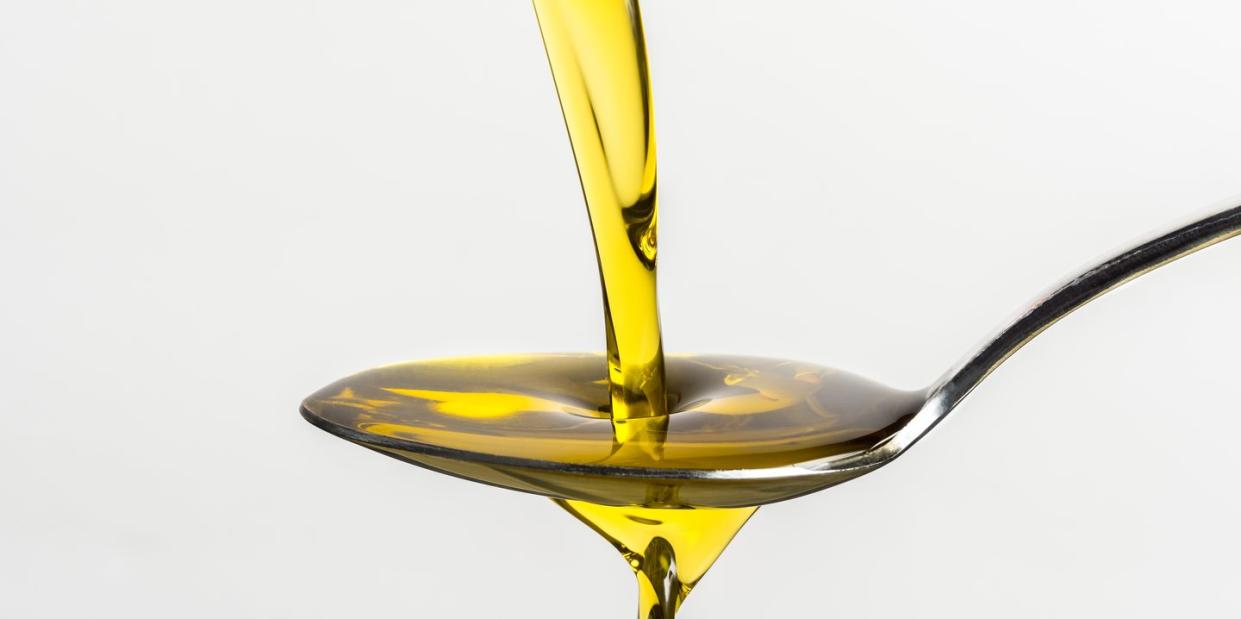A Single Drop of Olive Oil Led to a Great Leap Forward in Physics

Physicists have used olive oil and photons to observe a system phenomenon called hysteresis.
Hysteresis, when memory affects systems, is also observed in boiling water and magnets.
Oil-filled cavities could have applications in a variety of other fields.
If you believe decades of headlines, olive oil could be the closest thing to a life-fixing panacea we have—and now it’s even helping physicists in their experiments.
Researchers at the FOM Institute for Atomic and Molecular Physics (AMOLF) have used a single drop of olive oil to create a mirror effect within a system of interacting photons, and the results generate a reaction that mimics memory.
Have you ever used a computer that’s bogged down by too many open programs, and as you type or move the mouse, the screen responds a fraction of a second late? Your action has been logged, but it hasn’t yet occurred. This behavior is analogous to what the AMOLF scientists are studying, which is a physical phenomenon called hysteresis, or the way the interacting items within a system are reliant on what has happened before—their memory.
To study hysteresis in photons, these researchers positioned two mirrors so that photons bounced between them, and then added a drop of oil so they could measure how photons behaved inside the drop. This oil forms a laser cavity.
“Scanning the laser-cavity frequency detuning at different speeds across an optical bistability, we find a hysteresis area that is a nonmonotonic function of the speed,” the researchers write in their paper. Photons enter the area and get muddled up in a memory system.
Photons in oil aren’t the only hysteresistic systems. Boiling water is a closely studied example of hysteresis, and scientists have studied every way to magnify the phenomenon, because it varies so much based on a bunch of different factors.
“Experimental boiling curves with hysteresis have different trends, depending on thermal and geometrical parameters of the enhancement structure and boiling liquid physical properties,” a 2015 paper explains.
Hysteresis is often linked with nucleation—the two phenomena have related definitions and frequently appear together. In a seeded raincloud, nucleation is what turns the fixed cloud vapors into drops big enough to fall as rain, and this process, too, is set in motion before it fully expresses. Nucleation acts differently and takes different amounts of time depending on temperature and other factors. The variation is on the same level as with tinkering with boiling water to fine-tune hysteresistic reactions.
There’s some heated (so to speak) debate about what really causes hysteresis. Even though parts of it have been observed for a long time, explaining what’s happening is a different question that hasn’t been fully answered. For that reason, the olive oil scientists are excited about their findings and keeping their future research within a narrow scope.
“The equations that describe how light behaves in our oil-filled cavity are similar to those describing collections of atoms, superconductors and even high energy physics,” researcher Said Rodriguez explained. And by continuing to study only the hysteresis of the oil-filled cavity, the team can focus on those potential applications rather than the broader entire idea of hysteresis.
You Might Also Like

